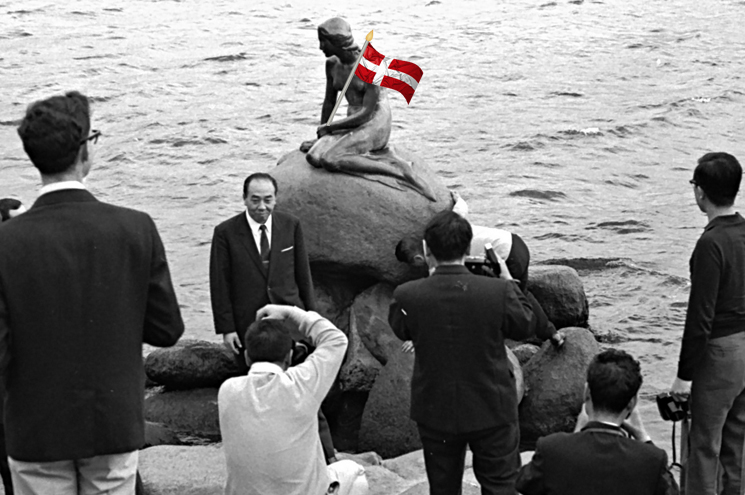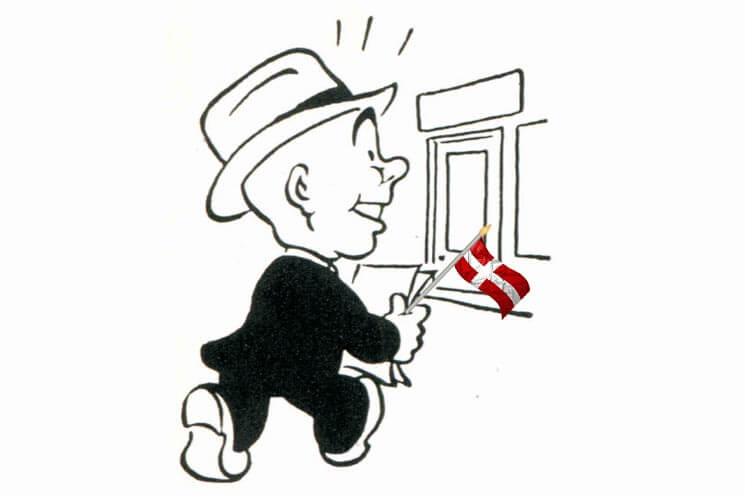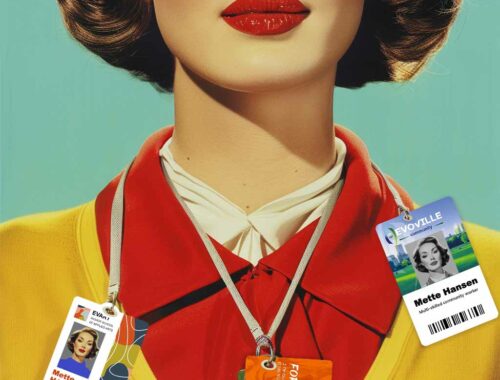One of the many things I do for a living is work as a voiceover, and one of my regular gigs is with a Danish company that makes high-end microphones. Frequently, they present their microphones to visiting customers from around the world, and my role is to be fitted out with six or seven different microphones at once – a headset microphone like Britney Spears wears, a necklace microphone like the ones on reality shows, a lapel microphone like newscasters wear, even an old fashioned tabletop microphone. Then I read a text while the company switches the various microphones on and off, so the customers can hear the difference between the different models.
When the customers are from China, I always choose to read a text from Hans Christian Andersen. Hans Christian Andersen’s fairy tales are extremely popular in China. Many Chinese read them as children. So, when I’m faced with a room full of Chinese microphone buyers, I usually read The Little Match Girl. The Little Match Girl, if you haven’t heard it lately, is a very sad story about a starving little girl on the streets of Copenhagen in the 19th century. She’s supposed to be selling matches to help support her family, but it’s winter and she’s so cold that she keeps lighting the matches to keep herself warm. In the end, they find her small, frail body frozen to death.
So, when I read this story, strapped into seven different microphones, I find that by the end these highly technical Chinese sound professionals are sniffling and sentimental, transported back to their younger days.
Photos around the Hans Christian Andersen statue
Hans Christian Andersen means a lot to the Chinese. Down by Copenhagen City Hall, there’s a statue of the man Danes call H.C. Andersen, and it’s almost always surrounded by Chinese tourists, taking one photo after another with the guy who wrote the Ugly Duckling. He also wrote the Little Mermaid, and the one time the famous Little Mermaid statue has been out of Denmark, it went to Shanghai, as part of a World Expo.
Denmark and China have a surprisingly deep relationship. Denmark was the first Western government to recognize the postrevolutionary Chinese government, in 1950. These days, China says Denmark is its top partner in Scandinavia, and the countries have a strategic relationship. Their leaders visit each other a lot – Danish prime minister Helle Thorning Schmidt was in China this week – and the two countries exchange thousands of university students ever year. You wouldn’t think it, but China and Denmark have much more in common than both having red flags and a love for green technology.
Basicially, the Chinese are helping keep three major Danish industries afloat.
The first is the pork industry. Denmark has millions of pigs – more pigs than people – and its other big growth market, the Middle East, is strangely uninterested in its pork products. China is interested. Denmark sells about 13 billion crowns a year of pork products in China.
The second industry is the wearable fur industry. In parts of the US or UK, wearing fur is controversial. It’s sometimes seen as cruel. I once wore a fur scrunchie in New York City – this was the 1990s – colleague said to me “Why do you have a dead animal on your head?”
In Scandinavia, fur is totally acceptable, as it is in China. As a matter of fact, in China, wearable fur is still seen as a sign of luxury. I was cleaning out my storage room last year and selling the stuff I didn’t use, and I found a ratty old vintage coat with a fur collar. When posted it for sale on Facebook, all the interested buyers were beautiful young Chinese women living in Denmark. The girl who bought it put it on and looked like a film star from the 1930s. It looked a lot better on her than it did on me. Anyway, mink skins alone account for about one-third of all Danish exports to China.
China loves the Danish Royal Family
The third Danish industry that China helps support is the Danish royal family. Some people in Denmark love the royal family, while others think they cost too much. One of the local newspapers calls Crown Prince Frederik Denmark’s biggest welfare recipient. But the Danish royal family is popular in Asia. Businesspeople in Denmark say that when it comes to making a deal in Asia, bringing along a prince really helps. That Chinese mogul who doesn’t have time to meet someone from little Denmark – oh, but the Danish Crown Prince will be there! Suddenly, the mogul has time for the meeting.
Actually, the Danish Royal Family has another significant tie to China. The Crown Prince’s brother married a woman who is partly of Chinese descent. She was the first Asian to join a European royal family. Her sons, who are 7th and 8th in line to the Danish throne, are the first people of Asian descent in a European royal line. Now, that prince and princess have since divorced and she’s been pretty much tossed on the junk heap, but that can happen to anyone – look at Princess Diana in Britain.
As an American living in Denmark, I have only one complaint about the Danish-Chinese relationship. It is almost impossible to find good Chinese food in Denmark. Denmark has good Thai food and OK Japanese food, but the only Chinese food available here is usually at greasy little grill bars in the bad part of town. So, having lived in Hong Kong for a couple of years, I generally make my own Chinese food at home. So we have an American, in Denmark, making Chinese food. That’s globalization.
Buy Kay’s books about Denmark on Amazon, Saxo, Google Books, Apple Books, Barnes & Noble Nook, or via our webshop.
Image mashup copyright Kay Xander Mellish 2025
Read also:
The little mermaid is four feet tall: Better options for tourists in Denmark





